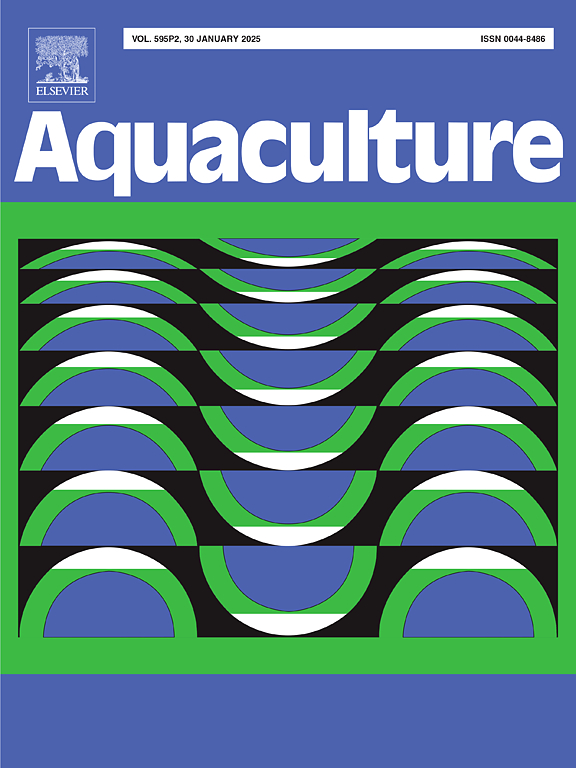Non-invasive detection method for Bonamia ostreae infected Ostrea edulis
IF 3.9
1区 农林科学
Q1 FISHERIES
引用次数: 0
Abstract
Populations of the native European flat oyster (Ostrea edulis) have been in decline for the past two centuries through a combination of exploitation, disease and climatic events. Ongoing efforts to restore these animals to suitable habitats throughout Europe are increasing in number and magnitude but have been hindered by pathogens such as the protist parasite Bonamia ostreae. Detecting such pathogens in animals before relocation to disease-free restoration or farm sites remains a major issue. Current detection methods rely on sacrificially dissecting a subset of the animals to perform qPCR and histology. While very sensitive, this method is destructive and the animals which are moved are themselves untested. Here, we present a non-invasive scalable method to detect Bonamia ostrea in O. edulis. Following overnight quarantine in aerated seawater, faeces and pseudofaeces produced by the oysters is collected. The DNA is extracted from this material and analysed by qPCR for presence of the pathogen. This approach proves more sensitive for pathogen detection than eDNA sampling from the water alone. Furthermore, when tested alongside conventional histology and tissue-extracted DNA qPCR results, our method demonstrated comparable sensitivity levels. Future studies aim to adapt this method to detecting other aquatic diseases or invasive species but it should be noted that this may be a pathogen-specific characteristic.
求助全文
约1分钟内获得全文
求助全文
来源期刊

Aquaculture
农林科学-海洋与淡水生物学
CiteScore
8.60
自引率
17.80%
发文量
1246
审稿时长
56 days
期刊介绍:
Aquaculture is an international journal for the exploration, improvement and management of all freshwater and marine food resources. It publishes novel and innovative research of world-wide interest on farming of aquatic organisms, which includes finfish, mollusks, crustaceans and aquatic plants for human consumption. Research on ornamentals is not a focus of the Journal. Aquaculture only publishes papers with a clear relevance to improving aquaculture practices or a potential application.
 求助内容:
求助内容: 应助结果提醒方式:
应助结果提醒方式:


